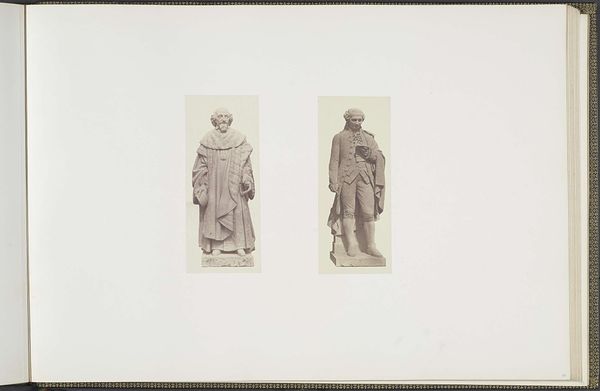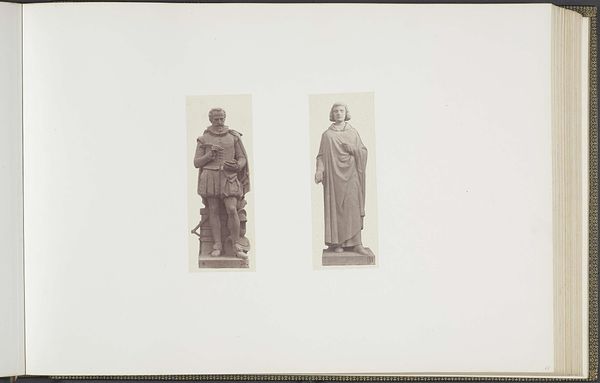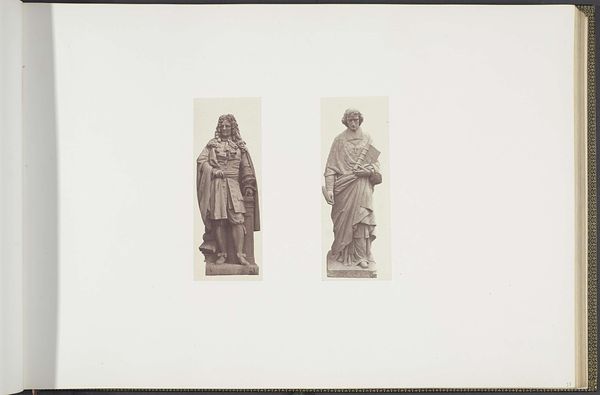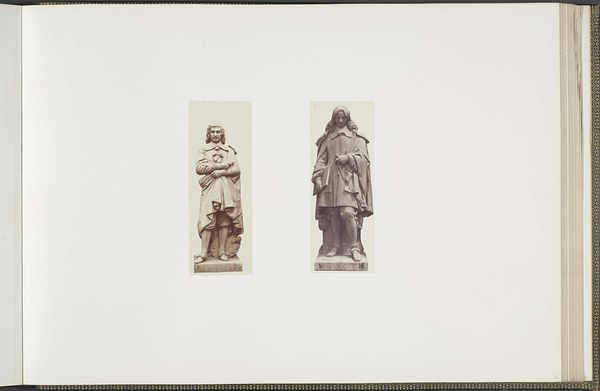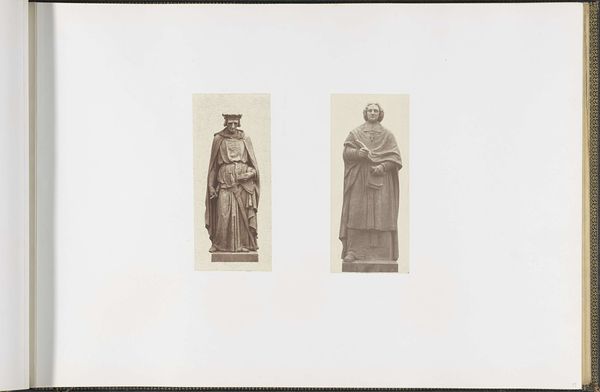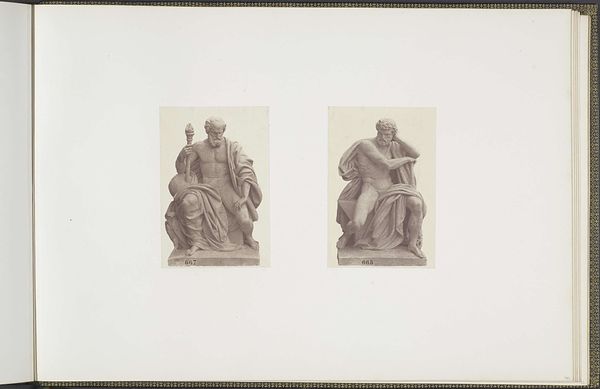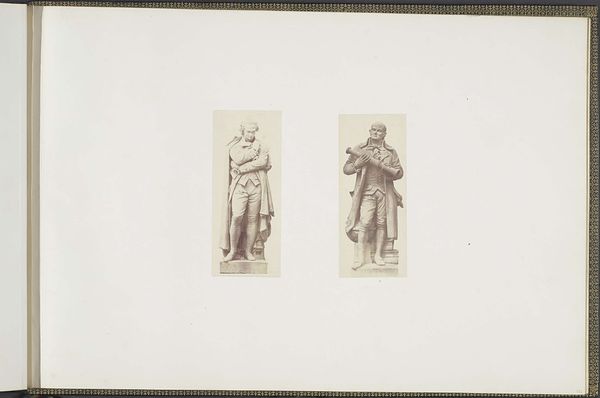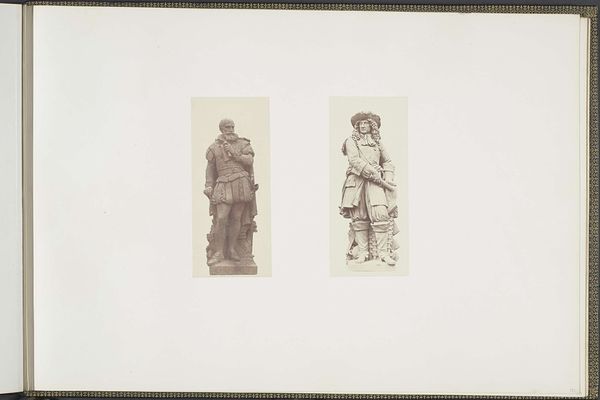
Gipsmodellen voor beeldhouwwerken op het Palais du Louvre: links "Lescot" door Henri Joseph François de Triqueti en rechts "Bullant" door Pierre Alfred Robinet c. 1855 - 1857
0:00
0:00
print, photography, sculpture
#
portrait
# print
#
photography
#
sculpture
#
history-painting
#
academic-art
Dimensions: height 382 mm, width 560 mm
Copyright: Rijks Museum: Open Domain
Edouard Baldus made this photograph of plaster models for sculptures at the Palais du Louvre in the mid-19th century. The sculptures depict architects Lescot and Bullant, both of whom contributed to the design and construction of the Louvre. This image reflects the 19th-century French state's effort to solidify a narrative of national identity. As photography became a useful tool, it was often employed to document public monuments like the Louvre. In doing so, it reinforced a sense of national pride and historical continuity. The decision to depict Lescot and Bullant, specifically, can be seen as a way to claim the Louvre’s architectural history as part of a broader French cultural heritage. To fully understand this photograph, we can explore the institutional history of the Louvre, the biographies of Lescot and Bullant, and consider archival material, which could give more insight into the political and cultural motivations behind the photographic campaign.
Comments
No comments
Be the first to comment and join the conversation on the ultimate creative platform.
